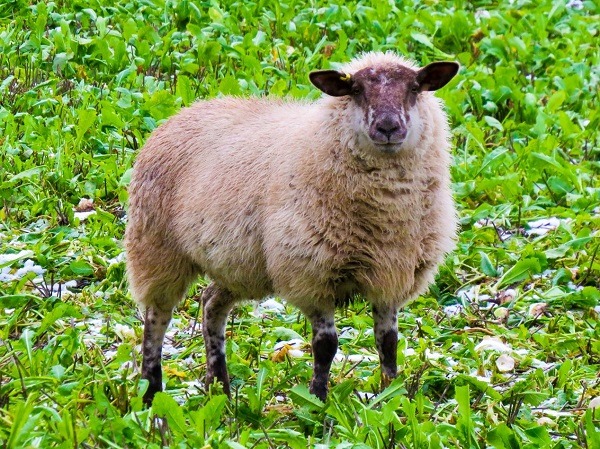As a farmer or individual planning to start a farm, you’ve probably heard of the implications of using the right farm equipment and whether you’ll be taking up plant or animal farming. Growing food and rearing animals for food has caused various conflicts over the years, with individuals such as the vegans protesting suggesting ways to replace the animal aspect of our diets.
There have also been financial, environmental, and dietary debates regarding the use of any form of farm products. Read through this article as a farmer to learn how you can navigate plant and animal farming.
Economic Viability
Let’s add more research to the table, a comparison of the economic profitability of animal-based and plant-based agricultural industries was done that gave birth to some interesting findings. Animal-based agriculture has a 9 percent higher value than plant-based agriculture in terms of sales/value.
The disparity in sales/value is $34.7 billion, with animal-based agriculture accounting for just 16 percent of total commodity pounds (combining animal-based and plant-based agriculture). Animal-based agriculture, on the other hand, costs 13% more than plant-based agriculture.
However, this evidence is based on large-scale animal and plant-based food production. Also, you will find that in some geographical locations, animal-based farming will be more profitable, as a result of the demand to supply ratio.
Environmental Effects
Researchers estimate that by 2050, the population would have grown by approximately 33%, increasing the agricultural food production demand by a whopping 70%. It is important to investigate the environmental impacts of both the animal and crop sectors to ensure food security for this rising population while also preventing harm caused by climate change.
Greenhouse Gas Emissions
Livestock accounts for 14.5 percent of total global anthropogenic greenhouse gas emissions per year. Livestock farming is responsible for a 29% rise in nitric oxide (N2O) emissions, a 27% increase in carbon dioxide (CO2) emissions, and a 44% increase in methane (CH4) emissions.
Feed production and manure processing have contributed to the increase in N2O, with the process involved in acquiring, depositing, and storing manure also responsible for the emission of CO2 into the atmosphere.
The solution to the effects would be embracing plant-based farming. Researchers find that livestock farming through greenhouse gas emission has resulted in heat stress that negatively affects plant-based farming. These farming findings mean that if we got rid of livestock food production, it would positively affect plant-based farming.
But what about animals that are not livestock you ask? There are solutions to the climate change problem that do involve animal farming. Modern fish farming, for example, has embraced practices that solve the negative environmental effects traditional fish farming caused in the past.
Land And Water
Livestock rearing, to accommodate global feeding demands, has resulted in deforestation and an increase in the amount of human water consumed by these animals. Plant-based farming has also had the same effect on both of these elements. However, comparing water consumption of the two shows that animal products have a larger water footprint than crop products.
As for land use, research indicates that plant-based agriculture only occupies 69% of the total landmass used in animal-based farming. However, in the US plant-based agriculture yields 14,000 pounds more per acre than animal-based agriculture.
Unnecessary land use by livestock farming can be avoided by engaging in other forms of animal-based farming, such as aquaculture. Aquaculture has greatly improved in recent years as a result of the industry’s ability to reduce its environmental effects combined with technological advancement.
It is no longer appropriate to dismiss farmed fish as unsustainable. This resource-efficient protein has the potential to fill a supply gap and meet the increasing demand of the world’s population. If you are in a fish-dominant area, try diversifying your farming practices. And as for your fish-farming needs, check out these cool and efficient pond filter supplies. These will help you to both take better care of your fish and increase production significantly.
Dietary Needs
According to researchers, removing all livestock from the agricultural system would result in a 23 percent increase in food production, with the majority of the increased food consisting of grain and legumes such as soy previously produced for animals.
Removing animals from agriculture’s production would reduce greenhouse gas emissions, but most of what is saved would be offset by the need to manufacture more synthetic fertilizer to replace animal-produced fertilizer. Instead of being classified as an animal product, the grain produced will now be classified as a human product. Removing animals from agriculture will result in a cumulative reduction of just 2.6 percent of US national greenhouse gas emissions.
But is this reduction in greenhouse gas emissions worth it, compared to the nutritional loss it will impart. Certain meat products, such as fish, have been known to offer plenty of nutrients for the human race. Although there are plant-based alternatives to these nutrients, it is impossible to implement such on a global scale.
For this aspect, deciding to choose which form to take up will be dependent on the dietary demands of the population in your area. For example, it will be almost impossible to convince fish-eating communities around lakes to take up vegan diets. For one, this would negatively impact their income, and secondly, human habits are not easy to change.
Conclusion
Much of the evidence brought forth clearly indicates that the more sustainable way to go would be plant-based farming. Financially, you could gain much more profit engaging in this form of farming, as opposed to animal-based farming.
However, this is calculated on a global scale, if you intend on being a farmer, first conduct the necessary research on the available resources and market in your area before choosing either form. All the best!




